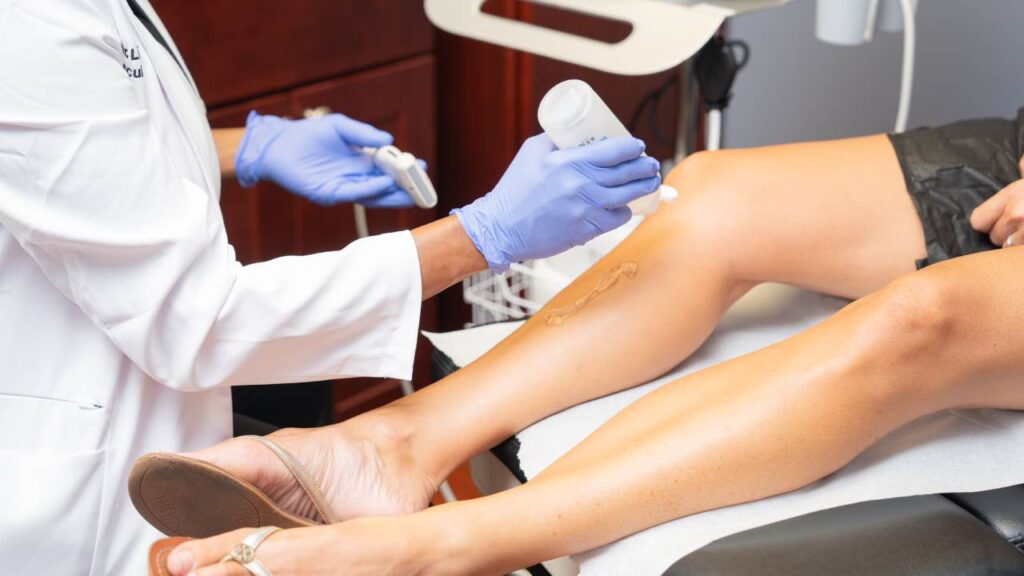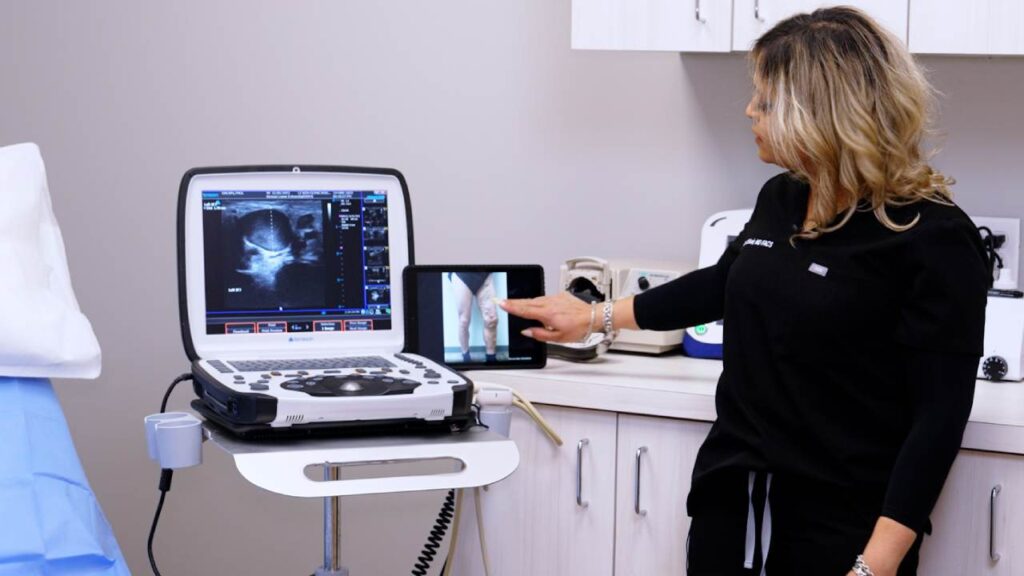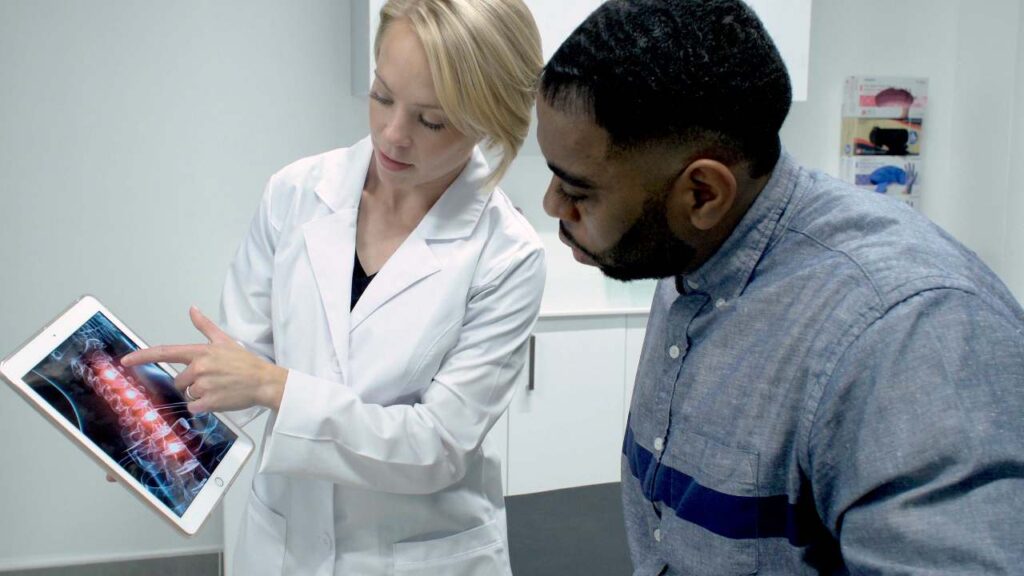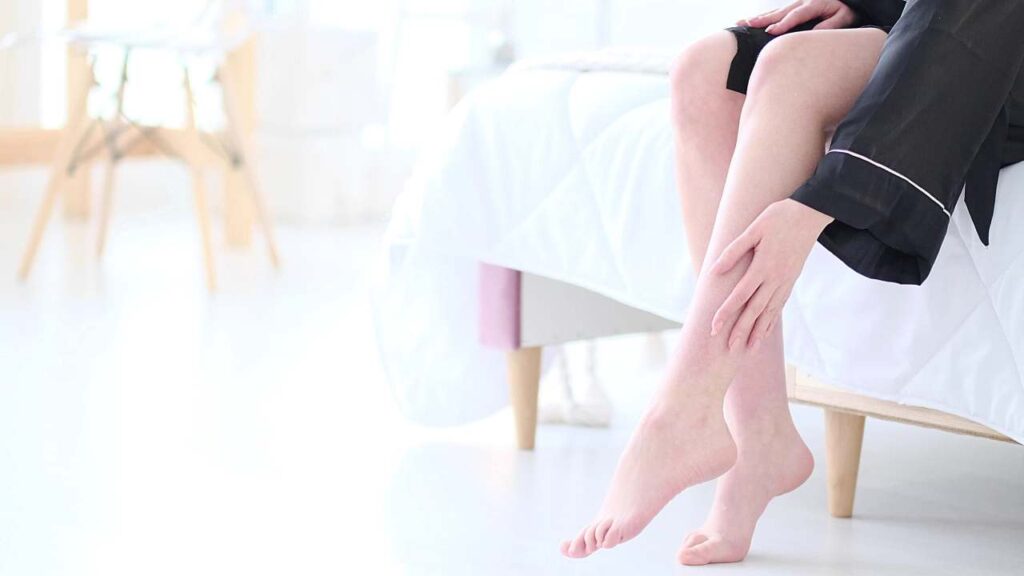Venous Insufficiency Causes Spider Veins
Spider veins — medically called telangiectasia — refer to a dense cluster of blood vessels visible on the surface of the skin. They look like spider webs or like the branches of trees, which is why they’re known as “spider veins”.
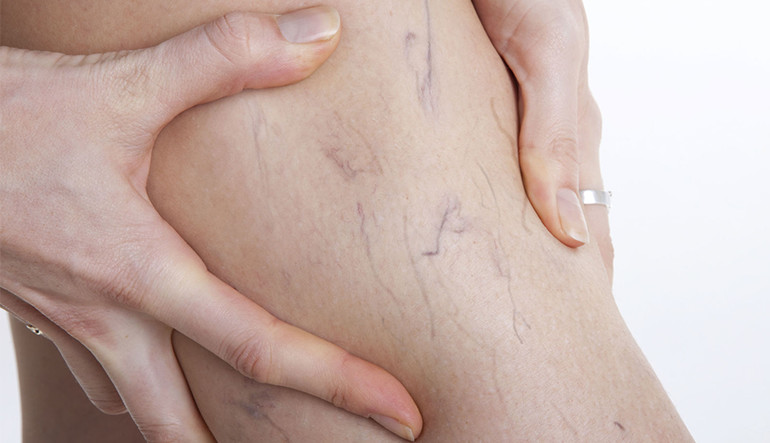
In some cases, spider veins are harmless and they only lead to social anxiety and self-consciousness because they look ugly. However, while spider veins aren’t dangerous in and of themselves, they can be symptomatic of a dangerous circulatory disorder.
Chronic venous insufficiency is often the root cause of spider veins. In this article, we discuss what we mean by “venous insufficiency causes spider veins”, how to improve blood flow, and what is chronic venous insufficiency CVI.
What is Chronic Venous Insufficiency CVI?
The human body consists of two types of blood vessels. Arteries carry blood from the heart to the rest of the body. Veins carry blood from the rest of the body to the heart.
The veins include valves that function like one-way doors to allow blood to pass through but prevent it from flowing back down due to gravity. Sometimes, these vein valves collapse, which causes blood to pool in the leg veins. Over time, the accumulated blood pushes against the vein walls and leads to vein dilation, which results in the formation of spider veins and varicose veins.
This is an extremely dangerous circulatory disorder known as chronic venous insufficiency CVI.
Initial Signs of Chronic Venous Insufficiency CVI
Chronic venous insufficiency CVI is an extremely under-diagnosed disease because its initial signs and symptoms are benign and resemble signs of aging.
The following are the initial signs of chronic venous insufficiency:
- Leg heaviness and exhaustion.
- Frequent leg cramps.
- Restless legs syndrome, a condition in which you keep moving your legs subconsciously.
- Pain intensifies when you stand up.
- Itchy legs and veins.
- Weakened and exhausted legs.
- Tingling sensation in the calves.
- Throbbing sensation in your legs.
- Formation of spider veins on the surface of the skin.
These signs and symptoms are generally worse at the end of the day or after long periods of sitting or standing still. This is because the symptoms worsen as more blood accumulates in your leg veins, which happens when you’ve been standing or sitting for long periods.
Complications of Chronic Venous Insufficiency CVI
The initial signs of chronic venous insufficiency may be benign, but the disease gets worse over time and leads to serious complications.
The following are some of the biggest complications of venous insufficiency.
- Varicose Veins: Large trunk-like blood vessels that protrude out of the surface of the skin in a twisted form.
- Excessive Bleeding: Varicose veins are basically dilated blood vessels. They burst easily if you scratch or bump them slightly. This leads to profuse bleeding that cannot be stopped and you have to be taken to an emergency room.
- Leg Ulcers: Non-healing wounds on the surface of the skin due to the lack of blood circulation.
- Skin Discoloration: Your skin gets pale and changes color because of the lack of blood circulation in your legs.
- Deep Vein Thrombosis: The accumulated blood in your veins may clot and eventually break away and travel to the lungs. This can trigger a potentially fatal condition called pulmonary embolism.
Medical History and Other Risk Factors of Chronic Venous Insufficiency CVI
Your medical history is one of the major risk factors of chronic venous insufficiency. If you’ve had spider veins or deep vein thrombosis in the past, you’re at a high risk of suffering from chronic venous insufficiency CVI as well.
The following are some of the other risk factors of chronic venous insufficiency:
- As you gel older, your vein valves weaken and you’re more likely to get vein disease.
- Women are more likely to get vein disease.
- Pregnancy causes several physiological changes that increase the risk of vein disease.
- Muscle weakness and injury may cause vein disease.
- A family history of vein disease increases your risk of venous insufficiency.
- Obesity increases your risk of vein disease.
- Leading a sedentary lifestyle also increases your risk.
How to Diagnose Chronic Venous Insufficiency CVI?
When you go to a vein doctor, they’ll diagnose chronic venous insufficiency using a method called Duplex Ultrasound Scan. This is an imaging test with which the vein doctor can visualize the blood flow in your veins, which helps them determine if you’re suffering from chronic venous insufficiency CVI.
How to Improve Blood Flow?
You can improve blood flow and reduce the risk of vein disease in the following ways:
- Wear compression stockings because they apply pressure on your leg veins and facilitate blood circulation.
- Run, practice yoga, swim, or cycle because these exercises engage your calf muscles and facilitate blood circulation.
- Elevate your legs while sitting.
Best Minimally Invasive Treatment for Chronic Venous Insufficiency CVI
The best minimally invasive treatments for chronic venous insufficiency are radiofrequency ablation, endovenous laser ablation, and VenaSeal. During these procedures, the vein doctor uses heat energy, laser energy, or vein glue to collapse or seal the affected saphenous vein, thereby restoring blood circulation to the heart. After the procedure is done, the vein doctor may use sclerotherapy to treat spider veins.
These procedures are minimally-invasive, non-surgical, and painless with a negligible risk of side effects. They can also be conducted in-office because they conclude within an hour with no downtime.
Schedule your Vein Treatment Today
VIP Medical Group is a collective of some of the best vein clinics and vein doctors in the country. We have highly-qualified vein doctors who use the latest state-of-the-art technology to diagnose the root cause of your spider veins and treat vein disease effectively. For more information, please schedule your vein treatment today.

